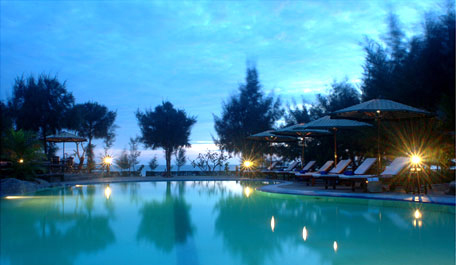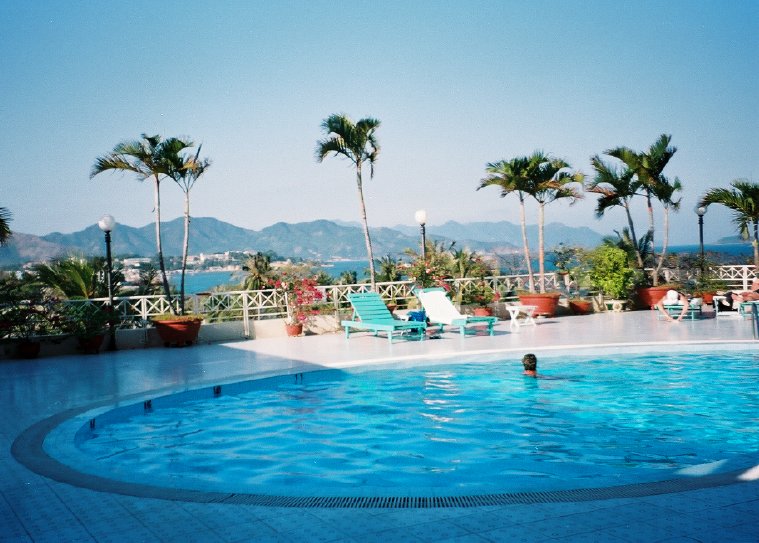INDOCHINA INTERNATIONAL CONSULTING CO., LTD
HO Add: 62L/36 Nguyên Hồng, Ward 11, Bình Thạnh District, HCMC - Vietnam
Biz Office Add: #48 Road No 11, Quarter 6, Hiệp Binh Chánh Ward, Thủ Đức, HCMC - Vietnam
®Source: http://viipip.com should be clearly quoted for any use of information extracted from our website.
Publication permit No: 60/GP-TTĐT , April 05, 2010.

Investment comes for support industries
Date: 5/10/2016 11:23:48 AM
In late January the Avery Dennison RBIs Company under Avery Dennison from the US, specializing in stamp labels, packaging, and decorative accessories for the textile, leather and footwear sectors, opened its second factory in Vietnam, at the Long Hau Industrial Park in the Mekong Delta’s Long An province, bringing its total investment to $40 million.
The factory will provide labeling solutions to meet growing demand and at the same time support Vietnam’s garment sector to integrate into global supply chains.
Avery Dennison RBIs is just one of many foreign companies stepping up its investment in support industries for Vietnam’s textile sector to seize the opportunities presented by the TPP and other free trade agreements.
Never before has such a wave of investment in support industries for textiles been seen in Vietnam.
Foreign investment rolls in
Investment comes for support industries, vietnam economy, business news, vn news, vietnamnet bridge, english news, Vietnam news, news Vietnam, vietnamnet news, vn news, Vietnam net news, Vietnam latest news, Vietnam breaking news
After only six months in operation, the bonded warehouse of Huntsman Textile Effects under the Huntsman Corporation from the US at the Long Binh Industrial Park in southern Dong Nai province, supplying dyes and chemicals to the textile industry, was operating at 100 per cent of its capacity of 250,000 tons.
This is one of many US projects in the textiles sector aimed at meeting increasing demand for chemicals and dyes. Mr. Paul G. Hulme, President of Huntsman Textile Effects, said the bonded warehouse will be positioned to provide textile chemicals to customers in Vietnam more quickly.
Depending on demand the company will consider whether to expand its scale. Chemicals and dyes have great potential in Vietnam, Mr. Hulme said, given the TPP and increasing investment in manufacturing fiber and fabric.
Indian investors, despite the country not being among the members of the TPP, have also recently announced investments in support industries for Vietnam’s textiles sector.
The Vietnam Chamber of Commerce and Industry (VCCI) revealed that some $300 million in Indian investment will go to building an industrial zone near Ho Chi Minh City focusing on the production of textile products.
Mr. Vinod K. Ladia, former Chairman of The Synthetic and Rayon Textiles Export Promotion Council (SRTEPC), said this is part of efforts by Indian companies to benefit from Vietnam being a signatory to the TPP.
“If the industrial park develops effectively then most likely a similar one will be built in the north,” he was quoted as saying.
“India is not among the countries in the TPP but because Vietnam imports fabric from the country we have strong reasons to increase our investment and benefit indirectly.”
Local investors on board
Domestic enterprises are also bolstering their investment in support industries for the textiles sector in a bid to complete manufacturing chains and reduce the country’s dependence on imported raw materials.
Mr. Than Duc Viet, Deputy General Director of the Garment 10 Corporation (Garco 10), said that over the last five years it has established close relationships with local raw material suppliers and joint ventures with 100 per cent foreign investment to secure sufficient raw material supplies.
“Garco 10 produces certain products that cannot use domestic material sources, so we are forced to import from other countries, including those that are not party to the TPP, such as India and Thailand,” he said.
“We therefore invited them to jointly invest with Garco 10 in Vietnam, extending production chains to increase the proportion of materials produced in Vietnam and to conform to the principles of the TPP.”
The Phong Phu Corporation, a member of the Vietnam National Textile and Garment Group (Viantex), has been preparing its resources for many years already to reach large-scale production levels.
Last year it invested more than VND1 trillion ($45 million) in implementing key investment projects to expand its production scale and take advantage of the opportunities on offer.
General Director Pham Xuan Trinh told local media that Phong Phu is currently building a knitted fabric factory in Nha Trang with a total capacity of 3,780 tons per year and total investment of VND285 billion ($12.8 million).
Next will be a VND698 billion ($31.4 million) denim factory, also in Nha Trang, with an indigo dyeing line capable of producing 35.7 million units per year.
Its third project will have production lines to print motifs on cotton blankets, with a capacity of 4.8 million units per year and investment of VND$36 billion ($1.6 million).
The projects, he said, will result in the corporation earning revenue of $1 billion in the next four years.
In order for its exports to reach some $550 million in the next five years and to expand to Japan, the US, and other members of the TPP, Mr. Nguyen Xuan Duong, Chairman of the Hung Yen Garment Joint Stock Company, said that creating a source of raw materials is crucial.
“Enterprises in the textiles sector must establish new raw material supplies, change their production lines, and seek customers under the TPP,” he said.
“Vietnam imports 60 per cent of raw materials from China, so enterprises should take the initiative to increase the localization rate and work towards meeting requirements on the rules of origin.”
Roadblocks ahead
While the textiles sector records among the largest export turnover in Vietnam it must import 80 to 85 per cent of its raw materials.
Exports now exceed $20 billion but the industry spends over $10 billion on imported fabric, zippers, and accessories.
Many experts believe that Vietnam can produce all of the raw materials needed but due to many factors can only meet 3 to 5 per cent of demand.
It’s proven unable to produce artificial materials. There are a number of factories manufacturing synthetic fiber but at low output levels and with poor quality.
Mr. Duong said that domestic support industries in the textiles sector remains undeveloped and have low added value, being inhibited by increasingly fierce competition.
Most small local businesses work under outsourcing contracts from foreign enterprises.
The export value of textiles and garments, though large, is mostly processed products with low added value.
A representative of the Hanoi Support Industries Business Association believes that a draft circular from the State Bank of Vietnam (SBV) may provide more incentives and favorable loans to assist small and medium-sized enterprises in support industries.
They will not only enjoy access to short-term lending but can also borrow up to 70 per cent of their investment needs. But it’s not a guaranteed success.
“Many enterprises in support industries want to benefit from preferential loans but are yet to prove their feasibility and efficiency,” he said.
“Their financial reports also lack transparency, so it is difficult to convince banks. Few enterprises in support industries can meet the conditions set out in the SBV draft.”
(Source:VN Economic Times)
- FDI in Vietnam by Sector (6/29/2021 1:52:22 PM)
- EVFTA adds value from behind-the-border reforms (8/3/2020 9:06:55 AM)
- Binh Duong, Singapore cooperates to develop solar energy (5/15/2020 9:23:23 AM)
- Construction of Tam Thang 2 IP to commence shortly (8/25/2017 1:50:34 PM)
- PM approved Hoa Phats $3 billion steel project in Dung Quat EZ (2/6/2017 10:49:32 PM)
- Instant coffee plant built in Dong Nai (1/18/2017 9:39:10 PM)
- Taiwanese firm builds workshops in Vinh Phuc (12/24/2016 12:54:10 PM)
- PM approves adjustments to planning for Long An’s industrial zones (10/14/2016 9:42:20 AM)
- Interest groups hinder listing process of privatized Vietnamese SOEs: association (10/7/2016 12:49:43 AM)
- Interest groups hinder listing process of privatized Vietnamese SOEs: association (10/7/2016 12:49:43 AM)
- Investment flow to Vietnam’s Dung Quat Economic Zone tops $10.5bn in 20 years (8/18/2016 10:56:11 PM)
- CJ Group seeks investment in Binh Dinh (8/18/2016 10:48:15 PM)
- Taiwanese footwear giants scaling up presence in Vietnam (8/1/2016 10:35:37 PM)
- Quang Ngai determined to revoke Taiwanese-invested US$4.5 billion steel project (6/7/2016 10:03:42 PM)
- Hanoi licenses $1.7 billion in major projects (6/7/2016 1:08:14 PM)

- FDI capital continues to pour into Vietnam
- Thanh Hoa receives good news: Preparing to have an additional industrial park of up to 470 hectares, creating jobs for nearly 30,000 people
- Industrial Park Real Estate: Waiting for the New Generation of FDI
- A wealthy Vietnamese city will have two special economic zones after the merger
- 30 billion USD capital FDI in Việt Nam by 2025, a series of "ông big" races to expand the land fund










 ADB: Vietnam’s 2009 GDP growth to be highest in South East Asia
ADB: Vietnam’s 2009 GDP growth to be highest in South East Asia MGM Grand Ho Tram: Vietnam’s First ‘Las Vegas Style’ Integrated Resort
MGM Grand Ho Tram: Vietnam’s First ‘Las Vegas Style’ Integrated Resort Nha Trang’s Twin Towers project licenced
Nha Trang’s Twin Towers project licenced Foreign investors still have good opportunities in Vietnam
Foreign investors still have good opportunities in Vietnam Sierra Wireless gets a foot in Vietnam’s ICT market
Sierra Wireless gets a foot in Vietnam’s ICT market